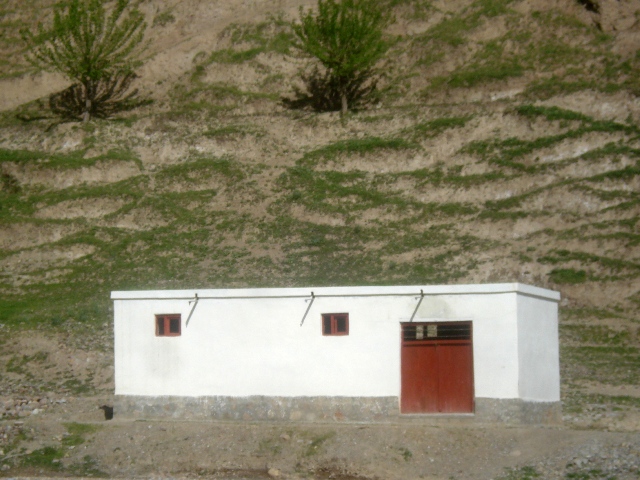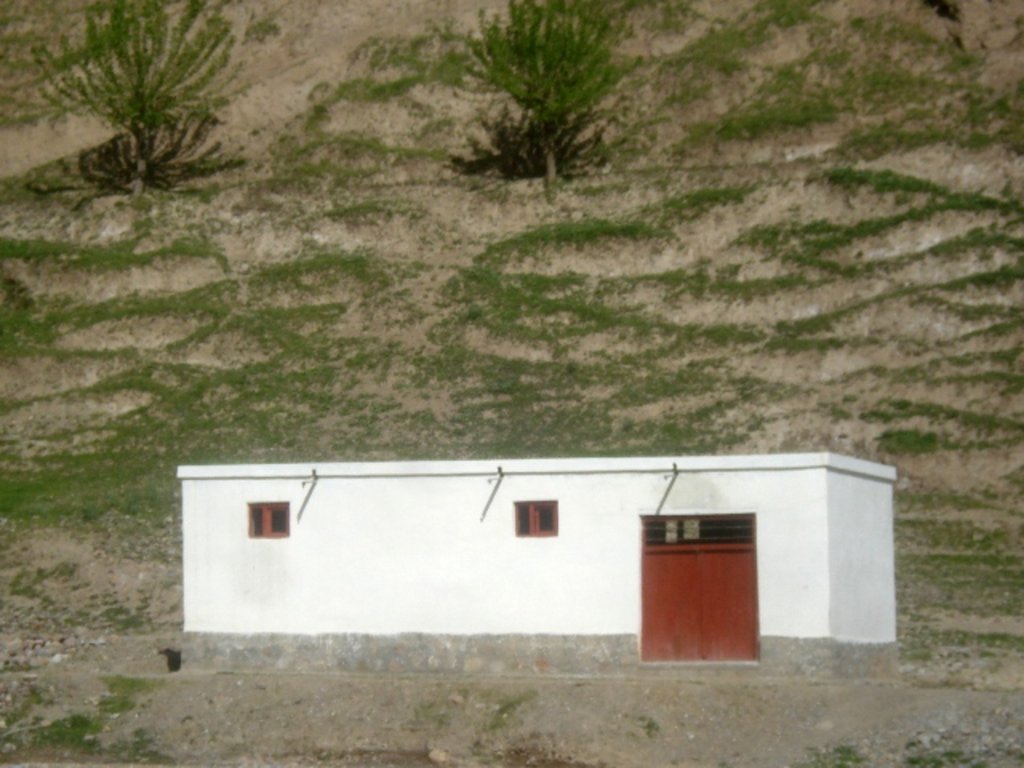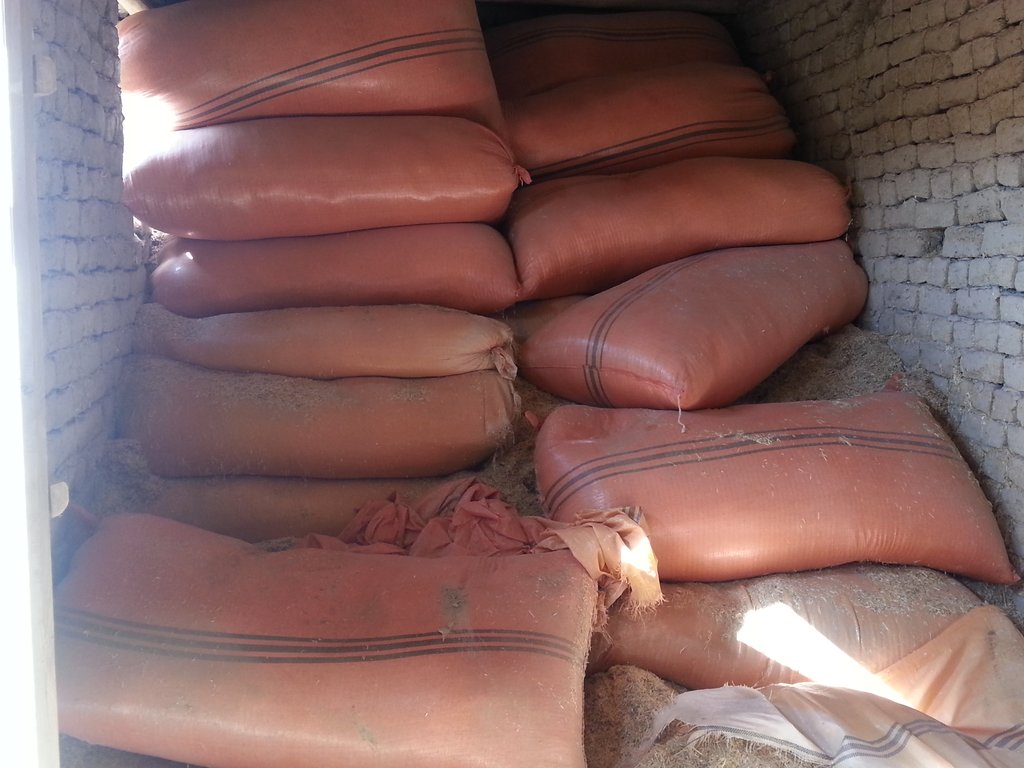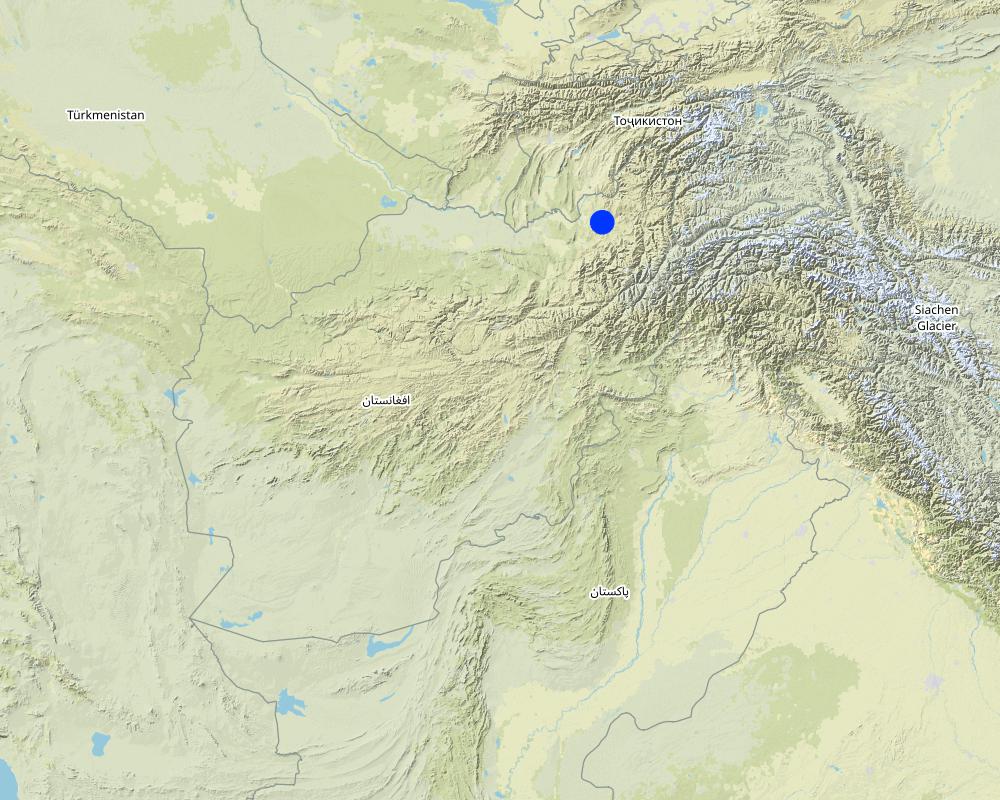Community fodder bank for sustaining supplies [Afeganistão]
- Criação:
- Atualização:
- Compilador/a: Bettina Wolfgramm
- Editores: MIAJAN MAROOFI, Hekmatullah Sharifzai, Roziya Kirgizbekova, Aslam Qadamov
- Revisor: William Critchley
Kahdon; Somonkhona
technologies_674 - Afeganistão
Veja as seções
Expandir tudo Recolher tudo1. Informação geral
1.2 Detalhes do contato das pessoas capacitadas e instituições envolvidas na avaliação e documentação da tecnologia
Pessoa(s) capacitada(s)
usuário de terra:
Mohammad Azim Habibullah
Natural Resources Management Committee (NRMC)
Sari Joy village, Rustaq District
Afeganistão
Especialista em GST:
Researcher:
Nome do projeto que facilitou a documentação/avaliação da Tecnologia (se relevante)
Livelihood Improvement Project Takhar, Afghanistan (LIPT)Nome do projeto que facilitou a documentação/avaliação da Tecnologia (se relevante)
Potential and limitations for improved natural resource management (NRM) in mountain communities in the Rustaq district, Afghanistan (Rustaq NRM Study)Nome da(s) instituição(ões) que facilitou(ram) a documentação/ avaliação da Tecnologia (se relevante)
Terre des Hommes (Terre des Hommes) - SuíçaNome da(s) instituição(ões) que facilitou(ram) a documentação/ avaliação da Tecnologia (se relevante)
Swiss Agency for Development and Cooperation (DEZA / COSUDE / DDC / SDC) - SuíçaNome da(s) instituição(ões) que facilitou(ram) a documentação/ avaliação da Tecnologia (se relevante)
CDE Centre for Development and Environment (CDE Centre for Development and Environment) - Suíça1.3 Condições em relação ao uso da informação documentada através de WOCAT
Quando os dados foram compilados (no campo)?
17/10/2016
O/a compilador/a e a(s) pessoa(s) capacitada(s) aceitam as condições relativas ao uso de dados documentados através da WOCAT:
Sim
1.4 Declaração de sustentabilidade da tecnologia descrita
A tecnologia descrita aqui é problemática em relação a degradação da terra de forma que não pode ser declarada uma tecnologia de gestão sustentável de terra?
Não
Comentários:
SLM practices documented in the framework of the Rustaq NRM study were established only recently (1-3 years ago). It is too early for a final judgment on the sustainability of these technologies within the human and natural environment of Chokar watershed.
1.5 Referência ao(s) questionário(s) sobre as abordagens da GST
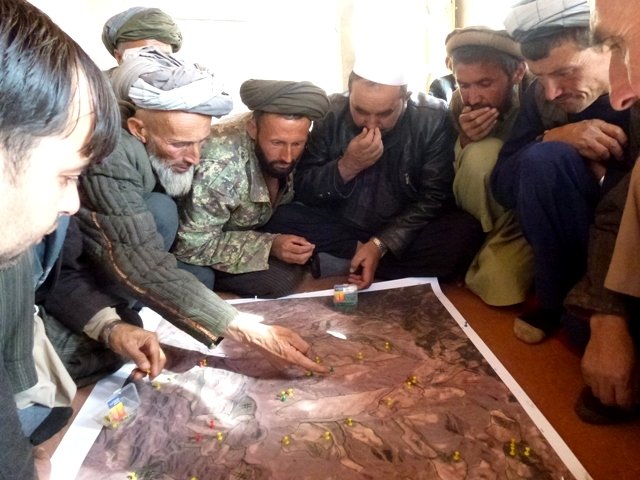
Watershed Associations (WSA) and Natural Resource Management Committees … [Afeganistão]
Two Watershed Associations (WSA), in Chaker and Nahristan watershed areas respectively, are registered at the national level with the Ministry of Agriculture Irrigation and Livestock (MAIL) and at the regional level with the Department of Agriculture. Both associations are strong, active, dynamic, and have the capacity to coordinate and support …
- Compilador/a: Bettina Wolfgramm
2. Descrição da tecnologia de GST
2.1 Descrição curta da tecnologia
Definição da tecnologia:
Community fodder banks have been established in villages for the purpose of ensuring supplies of livestock fodder during winter, to prevent loss of livestock and to prevent over-grazing early in spring.
2.2 Descrição detalhada da tecnologia
Descrição:
Livestock keeping is one of the key livelihood strategies in rural Rustaq, in addition to cultivation of agricultural crops. Families rely on their livestock not only for consumption of meat and dairy products, but also as means of transportation (donkeys), labour force in agriculture (oxen, donkeys) and a source of cash income. When crops fail to produce enough, families sell their livestock to survive until the next season. Naturally, every family strives to increase their household’s livestock as much as they can, which increases pressure on the local pastures, leading to extensive overgrazing.
The pastures in Jawaz Khana, Dashti Mirzai and Sari Joy are characterized by poor vegetation cover, low carrying capacity and severe erosion - with deep rills clearly visible. The quantity and quality of fodder is insufficient for all the livestock, leading to poor animal health. Starting from early spring to late autumn livestock keepers graze their animals on the open grazing lands. During winter months, the animals are kept inside and fed with the fodder conserved during summer. Very often, and especially during droughts, the fodder stocks can be extremely low and inadequate for the animals to make it through to spring - and then farmers lose livestock.
For the purpose of tackling fodder shortages during winter months and preventing livestock loss, the Livelihood Improvement Project in Takhar (LIPT) supported the Natural Resources Management Committees in Sari Joy, Dashti Mirzai and Jawaz Khana to establish community fodder banks. The fodder bank is also meant to compensate for the closure of rehabilitated pastures during the exclusion period of 1-3 years.
The NRMC mobilized the community to construct the fodder bank building. The building is composed of a large single space of 3.5 m x 10 m x 4 m. Generally the location for the fodder bank is chosen in the middle of the village near the mosque or NRMC building. On average, the fodder bank has a capacity of 250 bags of straw and 50 bundles of hay. Durable construction materials, namely stone and cement are used for the walls. The walls are painted for protection from mould. Proper windows and entrance door are installed to ensure insulation and protection from weather events. The construction materials and labour costs are fully covered by the LIPT project. The maintenance works for the building consists of repairing the roof every autumn with a clay layer.
The fodder bank serves as a reserve for the village community. After each harvest the farmers deliver a certain amount of fodder to the fodder bank, and in return they can take out fodder for their livestock needs. The established regulations require that each farmer is obliged to reimburse the fodder bank for the fodder he has taken as a loan. The NRMC appoints persons in charge of accepting, and releasing, fodder from the fodder bank. The persons in charge record the incoming and outgoing fodder in the log book for fodder. The log book registers the name of the farmer and the amount of fodder he has delivered, or taken, from the fodder bank.
The fodder banks have been functioning for only couple of years. The community has been using the fodder bank to feed their livestock during winter mainly, but also when they have shortage of fodder in other months as well. Due to the low capacity of current pastures the farmers produce just enough to feed their livestock and not much is left to store in the fodder bank. The fodder stocks are expected to increase in future as part of the ongoing process of pasture rehabilitation through cultivation of alfalfa and rotational grazing plans.
Women and children are often involved in collecting the hay and carrying it to the fodder bank. This requires long-distance walks with heavy loads since many houses are located far from the fodder bank. Despite this heavy work, women say that they find the fodder banks useful because of the opportunity to borrow hay for their livestock when they need it.
2.3 Fotos da tecnologia
2.5 País/região/locais onde a tecnologia foi aplicada e que estão cobertos nesta avaliação
País:
Afeganistão
Região/Estado/Província:
Takhar Province, Rustaq District
Especificação adicional de localização:
Dashti Mirzai, Sari Joy, Jawaz Khana Villages
Comentários:
Coordinates of SLM plots owned by SLM implementers who participated in the FGD derived through the Rustaq NRM study QGIS database.
This documentation is based on the experiences of SLM implementers from Sari Joy (1 Fodder bank), Jawaz Khana, (1 Fodder bank), and Dashti Mirzai (1 Fodder bank).
Map
×2.6 Data da implementação
Indique o ano de implementação:
2014
Caso o ano exato seja desconhecido, indique a data aproximada:
- menos de 10 anos atrás (recentemente)
2.7 Introdução da tecnologia
Especifique como a tecnologia foi introduzida:
- através de projetos/intervenções externas
Comentários (tipos de projeto, etc.):
Livelihood Improvement Project Takhar (LIPT) supported by Swiss Development Cooperation (SDC) from 2012-17
3. Classificação da tecnologia de GST
3.1 Principal/principais finalidade(s) da tecnologia
- Reduz, previne, recupera a degradação do solo
- Improve fodder supplies
3.2 Tipo(s) atualizado(s) de uso da terra onde a tecnologia foi aplicada
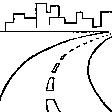
Assentamentos, infraestrutura
- Assentamentos, edificações
Observações:
Fodder bank to store hay and wheat straw
3.3 Mais informações sobre o uso da terra
Abastecimento de água para a terra na qual a tecnologia é aplicada:
- Precipitação natural
Número de estações de cultivo por ano:
- 1
3.4 Grupo de GST ao qual pertence a tecnologia
- Gestão de pastoralismo e pastagem
- Medidas pós-colheita
3.5 Difusão da tecnologia
Especifique a difusão da tecnologia:
- Aplicado em pontos específicos/concentrado numa pequena área
3.6 Medidas de GST contendo a tecnologia

Outras medidas
Comentários:
The measures comprise construction of a facility to host community fodder bank
3.8 Redução, prevenção ou recuperação da degradação do solo
Especifique o objetivo da tecnologia em relação a degradação da terra:
- Recuperar/reabilitar solo severamente degradado
Comentários:
The Technology is implemented in support of pasture rehabilitation, sustaining fodder for livestock and preventing early grazing, .
4. Especificações técnicas, implementação de atividades, entradas e custos
4.2 Especificações técnicas/ explicações do desenho técnico
The building is composed of a large single room of 3.5 m x 10 m x 4 m. Generally the location for the fodder bank is chosen in the middle of the village near the mosque or NRMC building. On average, the fodder bank has a capacity of 250 bags of straw and 50 bundles of hay. Durable construction materials such as stone and cement are used for the walls. The walls are covered with white paint for protection from mould. Proper windows and entrance door are installed to ensure insulation and protection from weather events. The construction materials and labour costs are fully covered by the LIPT project. The maintenance works consists of repairing the roof every autumn with a clay layer.
4.3 Informação geral em relação ao cálculo de entradas e custos
Especifique como custos e entradas foram calculados:
- Por unidade de tecnologia
Especifique a unidade:
Building
Especifique volume, comprimento, etc (se relevante):
Measurements: 3.5 m x10 m x 4 m
Especifique a moeda utilizada para os cálculos de custo:
- Dólares norte-americanos
Indique a taxa cambial do dólar norte americano para a moeda local (se relevante): 1 USD =:
67,0
Indique a média salarial da mão-de-obra contratada por dia:
5.2-5.3 USD
4.4 Atividades de implantação
| Atividade | Tipo de medida | Periodicidade | |
|---|---|---|---|
| 1. | Selection of the site for building the fodder bank | Gestão | Spring |
| 2. | Preparatory works and excavation of the site | Estrutural | Summer |
| 3. | Construction of walls | Estrutural | Summer |
| 4. | Other construction works and installations | Estrutural | Summer |
4.5 Custos e entradas necessárias para a implantação
| Especifique a entrada | Unidade | Quantidade | Custos por unidade | Custos totais por entrada | % dos custos arcados pelos usuários da terra | |
|---|---|---|---|---|---|---|
| Mão-de-obra | Preparatory works and excavation of the site | person-day | 2,0 | 5,3 | 10,6 | |
| Mão-de-obra | Construction of wall of the facility | person-day | 15,0 | 5,3 | 79,5 | |
| Mão-de-obra | Other construction works and installations | person-day | 15,0 | 5,3 | 79,5 | |
| Equipamento | Hummer | piece | 2,0 | 3,7 | 7,4 | |
| Equipamento | Weel barrow | piece | 1,0 | 37,0 | 37,0 | |
| Equipamento | Pickaxe | piece | 2,0 | 3,7 | 7,4 | |
| Equipamento | Big hammer | piece | 1,0 | 13,0 | 13,0 | |
| Equipamento | Saw | piece | 1,0 | 2,8 | 2,8 | |
| Equipamento | Shovel | piece | 4,0 | 3,7 | 14,8 | |
| Equipamento | Gloves | set | 10,0 | 1,5 | 15,0 | |
| Equipamento | Other tools | piece | 10,0 | 3,2 | 32,0 | |
| Material de construção | Stone for construction | cubic meter | 12,0 | 16,0 | 192,0 | |
| Material de construção | Cement | Bag | 71,0 | 3,7 | 262,7 | |
| Material de construção | Lime | kg | 1,0 | 14,0 | 14,0 | |
| Material de construção | Gravel | cubic meter | 4,0 | 16,0 | 64,0 | |
| Material de construção | Oil paint | kg | 10,0 | 1,7 | 17,0 | |
| Material de construção | Door | piece | 1,0 | 162,0 | 162,0 | |
| Material de construção | Window | piece | 4,0 | 17,0 | 68,0 | |
| Material de construção | Plastic color 50% and 100% | kg | 48,0 | 2,45 | 117,6 | |
| Custos totais para a implantação da tecnologia | 1196,3 | |||||
Se o usuário da terra arca com menos que 100% dos custos, indique quem cobre os custos remanescentes:
Livelihood Improvement Project Takhar (LIPT) implemented by Terre des hommes (Tdh) Switzerland
4.6 Atividades recorrentes/manutenção
| Atividade | Tipo de medida | Periodicidade/frequência | |
|---|---|---|---|
| 1. | Repair works of the roof with clay and hay mixture | Estrutural | Autumn |
4.7 Custos e entradas necessárias pata a manutenção/atividades recorrentes (por ano)
| Especifique a entrada | Unidade | Quantidade | Custos por unidade | Custos totais por entrada | % dos custos arcados pelos usuários da terra | |
|---|---|---|---|---|---|---|
| Mão-de-obra | Repair of the roof | person day | 2,0 | 5,3 | 10,6 | 100,0 |
| Custos totais para a manutenção da tecnologia | 10,6 | |||||
4.8 Fatores mais importantes que afetam os custos
Descreva os fatores mais determinantes que afetam os custos:
Due to the remoteness of the villages where the Technology has been implemented, all the inputs for establishment, such as agricultural equipment, plant material, fertilizers, etc., are purchased in Rustaq town. The expenses for traveling and delivering the inputs affect the establishment costs.
5. Ambiente natural e humano
5.1 Clima
Precipitação pluviométrica anual
- <250 mm
- 251-500 mm
- 501-750 mm
- 751-1.000 mm
- 1.001-1.500 mm
- 1.501-2.000 mm
- 2.001-3.000 mm
- 3.001-4.000 mm
- > 4.000 mm
Especifique a média pluviométrica anual em mm (se conhecida):
580,00
Especificações/comentários sobre a pluviosidade:
Average annual precipitation for the area was calculated with 580 mm, with minimum in dry years (2000 and 2001) of 270 mm and maximum in wet years (2009/2010) of 830 mm. The absolute maximum rainfall was calculated for 1986 with 1024 mm. The data series covers the time from 1979 to 2014
Indique o nome da estação meteorológica de referência considerada:
Reference meteorological station considered: Climate Forecast System Reanalysis (CFSR), http://rda.ucar.edu/pub/cfsr.html
Zona agroclimática
- Semiárido
Derived from the publicly available data set on length of growing period (LGP) (Fischer 2009 / IIASA-FAO). Internet link: http://tiles.arcgis.com/tiles/P8Cok4qAP1sTVE59/arcgis/rest/services/Length_of_growing_period/MapServer
5.4 Disponibilidade e qualidade de água
Lençol freático:
5-50 m
Disponibilidade de água de superfície:
Médio
Qualidade da água (não tratada):
Água potável boa
A salinidade da água é um problema?
Não
Ocorre inundação da área?
Sim
Regularidade:
Esporadicamente
Comentários e outras especificações sobre a qualidade e a quantidade da água:
Floods occur mainly during the rainy seasons in spring and autumn. Availability of surface water differs for the three study villages Sari Joy, Jawaz Khana, and Dashti Mirzai. Sari Joy has sources and good surface water availability. Jawaz Khana has poor water availability as water has to be fetched from a lower-down stream. Dashti Mirzai has good water availability - also from an irrigation channel.
5.5 Biodiversidade
Diversidade de espécies:
- Baixo
Diversidade de habitat:
- Baixo
5.6 Características dos usuários da terra que utilizam a tecnologia
Sedentário ou nômade:
- Semi-nômade
Orientação de mercado do sistema de produção:
- Subsistência (autoabastecimento)
- Misto (subsistência/comercial)
Rendimento não agrícola:
- 10-50% de toda renda
Nível relativo de riqueza:
- Pobre
- Média
Indivíduos ou grupos:
- Indivíduo/unidade familiar
- Grupos/comunidade
Nível de mecanização:
- Trabalho manual
- Tração animal
Gênero:
- Mulheres
- Homens
Idade dos usuários da terra:
- meia-idade
Indique outras características relevantes dos usuários da terra:
The land users in the area where the Technology is applied belong to the Uzbek ethnic minority group Qarluq.
Although the men are generally the main land users, however, women and children also take active part in the related work. The functions of men and women are clearly distinguished within the Afghan society. At the same time within the family this division of work and functions also results in men and women working hand-in-hand. An improvement of the family’s livelihood situation is expected to positively affect all family members. While, it is recognized that the involvement of women is key in order to secure basic human rights for everyone, to achieve good governance, sustainable development, and to efficiently contribute to poverty reduction (SDC 2004), it is also clear that a context sensitive approach is of great importance.
Women in rural Afghanistan are involved in many production and income generating activities that contribute to the overall household income, however, very few women own resources such as land and livestock, and their income generating options are fewer in comparison to that of men.
5.7 Média da área de terra própria ou arrendada por usuários da terra que utilizam a tecnologia
- < 0,5 ha
- 0,5-1 ha
- 1-2 ha
- 2-5 ha
- 5-15 ha
- 15-50 ha
- 50-100 ha
- 100-500 ha
- 500-1.000 ha
- 1.000-10.000 ha
- > 10.000 ha
É considerado pequena, média ou grande escala (referente ao contexto local)?
- Média escala
5.8 Propriedade de terra, direitos de uso da terra e de uso da água
Propriedade da terra:
- Comunitário/rural
- Indivíduo, não intitulado
Direitos do uso da terra:
- Comunitário (organizado)
- Indivíduo
Direitos do uso da água:
- Comunitário (organizado)
Comentários:
Those who own land and use water for irrigation are obliged to pay for water. The payment is made both in kind and in cash to the Mirob - the person in charge of distributing water in the community. The amount of the payment varies from village to village.
5.9 Acesso a serviços e infraestrutura
Saúde:
- Pobre
- Moderado
- Bom
Educação:
- Pobre
- Moderado
- Bom
Assistência técnica:
- Pobre
- Moderado
- Bom
Emprego (p. ex. não agrícola):
- Pobre
- Moderado
- Bom
Mercados:
- Pobre
- Moderado
- Bom
Energia:
- Pobre
- Moderado
- Bom
Vias e transporte:
- Pobre
- Moderado
- Bom
Água potável e saneamento:
- Pobre
- Moderado
- Bom
Serviços financeiros:
- Pobre
- Moderado
- Bom
6. Impactos e declarações finais
6.1 Impactos no local mostrados pela tecnologia
Impactos socioculturais
Conhecimento de GST/ degradação da terra
Comentários/especificar:
Land users learned about the SLM practice through involvement in the process.
6.2 Impactos externos mostrados pela tecnologia
Comentários relativos à avaliação de impacto:
These comments apply to 6.1 and 6.2:
- Socio-economic impacts: Individual SLM implementers were asked to rate the benefits from the Technology. They were asked to indicate production increase of crops; fodder; animals; wood; non-wood forest products; increase in product diversity; or production area. The most important increase they rated with 3, the second most with 2, others with 1 point. Averages of the points given by all implementers are reflected here.
- Similarly for the "ecological impacts" and on "off-site impacts": Individual SLM implementers were asked to rate the on-site and off-site impacts of the Technology on water; soil; and vegetation. They were asked to indicate the strength of impacts with three, two or one points. Averages of the points given by all Technology implementers are reflected here.
- Socio-cultural impacts: This section is answered by the scientists, based on information collected during focus group discussions, and interviews conducted with persons from the 3 villages where the LIPT project implemented the Technology.
6.3 Exposição e sensibilidade da tecnologia às mudanças climáticas graduais e extremos/desastres relacionados ao clima (conforme o ponto de vista dos usuários da terra)
Comentários:
SLM implementers from three villages were asked to jointly discuss and rate how much the SLM technology reduced the lands vulnerability to drought and local rainstorms. Only vulnerability to the most prevalent climate extremes (drought and local rainstorms) was discussed. SLM technologies were rated as reducing vulnerability poorly , well, or very well. The average points reflected here are from multi-criteria matrices compiled in three villages where the SLM technology had been implemented.
6.4 Análise do custo-benefício
Como os benefícios se comparam aos custos de implantação (do ponto de vista dos usuários da terra)?
Retornos a curto prazo:
muito positivo
Retornos a longo prazo:
muito positivo
Comentários:
Based on the multi-criteria matrix: During the FGD with SLM implementers, a multi-criteria matrix was elaborated, and different SLM practices were rated. In the framework of this exercise, SLM implementers were asked to jointly discuss and rate short term (1-3 years) and long-term (10 years) returns. As the SLM technology was only implemented 1-2 years ago, it is too early to compare benefits to maintenance costs. Farmers have little experience so far on the actual benefits of the SLM technology. The ratings are mostly based on expected benefits and not on actual benefits.
6.5 Adoção da tecnologia
- casos isolados/experimental
Comentários:
One fodder bank is established in each village to be used by the whole community for storing their hay.
6.6 Adaptação
A tecnologia foi recentemente modificada para adaptar-se as condições variáveis?
Não
6.7 Pontos fortes/vantagens/oportunidades da tecnologia
| Pontos fortes/vantagens/oportunidades na visão do usuário da terra |
|---|
| Fodder reserves are available during winter and early spring. |
| Livestock keepers can borrow fodder from the fodder bank when they need it. |
| The fodder is stored in a dry place and is protected from rain and snow. |
| Pontos fortes/vantagens/oportunidades na visão do/a compilador/a ou de outra pessoa capacitada |
|---|
| The community learns how to regulate the use of fodder |
| By providing fodder reserves, the rehabilitated pastures are protected from early grazing in spring. |
6.8 Pontos fracos, desvantagens/riscos da tecnologia e formas de superá-los
| Pontos fracos/vantagens/riscos na visão do/a compilador/a ou de outra pessoa capacitada | Como eles podem ser superados? |
|---|---|
| Poor awareness and community participation in storing their fodder in the fodder banks | More community awareness and mobilization |
7. Referências e links
7.1 Métodos/fontes de informação
- entrevistas com usuários de terras
Focus group discussions (FGD) were organized to collect information from SLM implementers in the villages of Sari Joy, Jawaz Khana and Dashti Mirzai.
- entrevistas com especialistas em GST
Close collaboration took place during the compilation of this material with the technical staff of the LIPT project in Rustaq.
- compilação de relatórios e outra documentação existente
Information provided in the reports of Tdh LIPT Project in Rustaq served as an initial source of information during the preparatory phase and also solidifying the description of the technology and area of implementation. Other background papers on Afghanistan were referred to for general information on agriculture and natural resource management in Afghanistan.
7.2 Referências às publicações disponíveis
Título, autor, ano, ISBN:
Guidelines for Focus Groups Discussions
Título, autor, ano, ISBN:
Methods section of the Rustaq NRM study
Links e módulos
Expandir tudo Recolher tudoLinks

Watershed Associations (WSA) and Natural Resource Management Committees … [Afeganistão]
Two Watershed Associations (WSA), in Chaker and Nahristan watershed areas respectively, are registered at the national level with the Ministry of Agriculture Irrigation and Livestock (MAIL) and at the regional level with the Department of Agriculture. Both associations are strong, active, dynamic, and have the capacity to coordinate and support …
- Compilador/a: Bettina Wolfgramm
Módulos
Não há módulos


